A spring green pudding made from wild greens, allium leaves and barley flour is an old recipe from times when a household might have had just one pot. To me, it's the sort of cooking that evokes ancient stone farmhouses with roaring fires heating a joint of game.
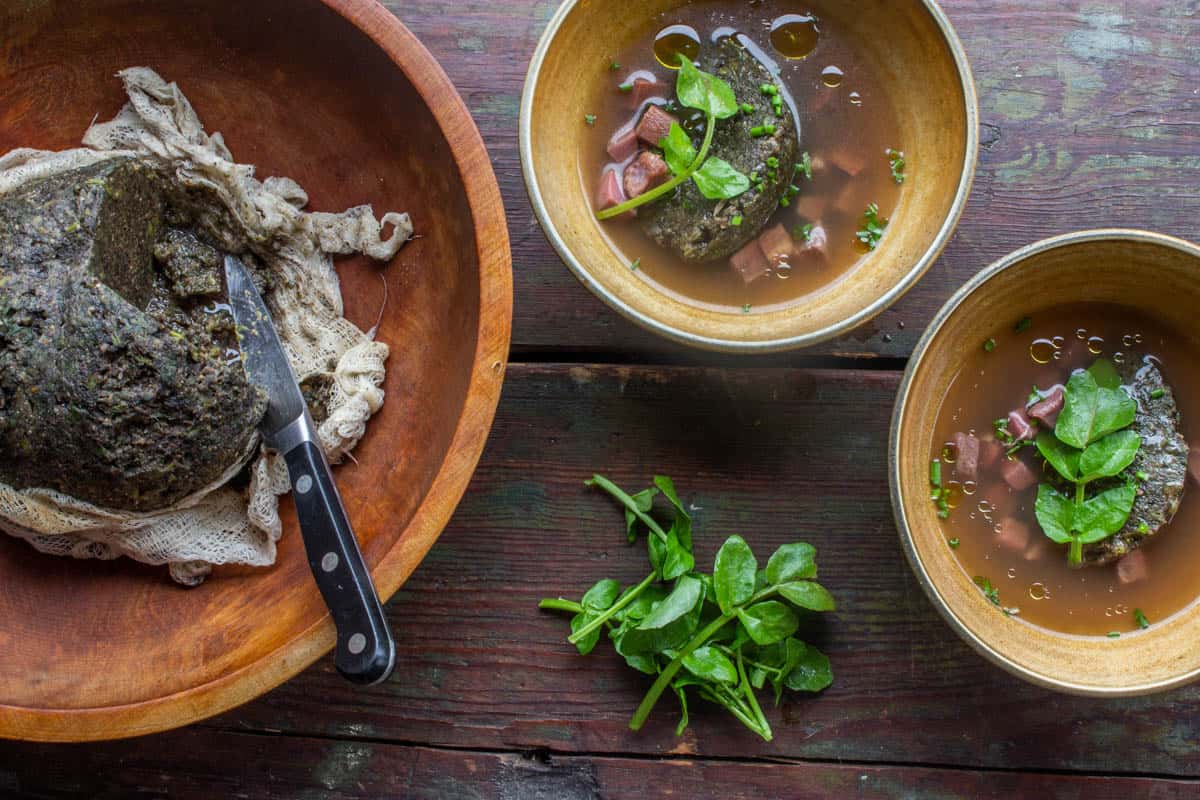
As an American who grew up with two-toned plastic pudding cups in the lunchroom, the words "savory pudding" bring up mixed feelings for me. As some of you will know, in Britain a pudding is something completely different, and could mean anything from a sort of sweet, boiled fruit cake served with hard sauce to black pudding/blood sausage.
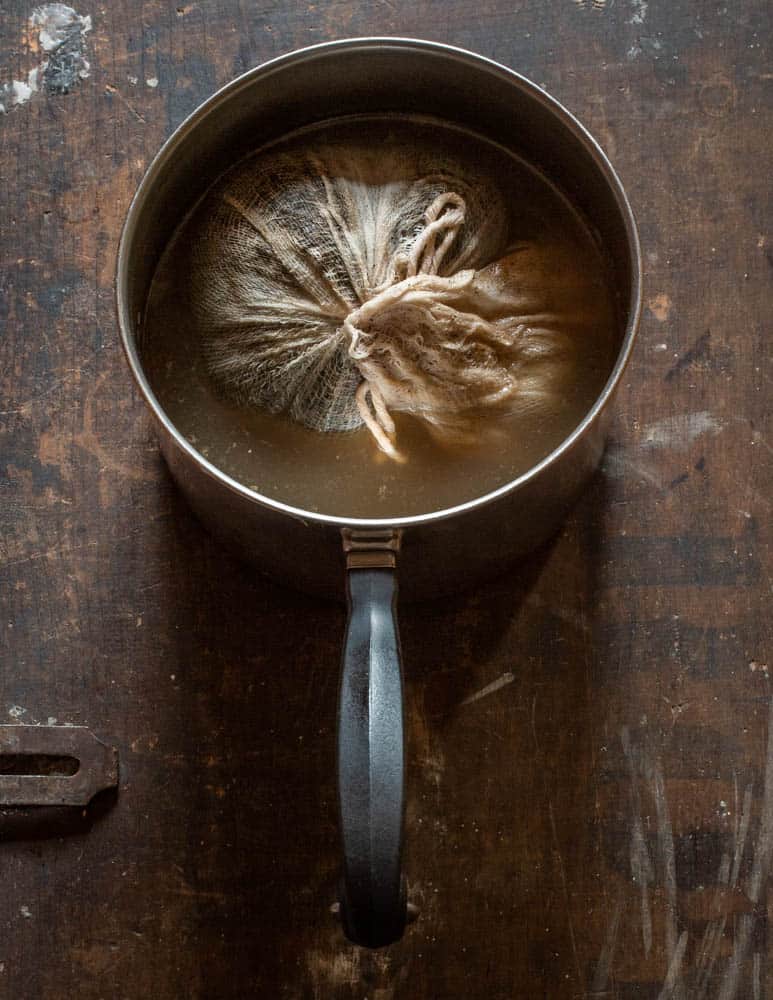
There's a decent amount of account online of people recreating nettle pudding specifically, and a bunch of claims that it's the oldest recipe in the world. If it is or isn't, I can't tell you (I doubt it, as most of the recipes use a cup measure) but I do know nettles are an ancient food. What really mattered to me was seeing if I could make a version of it that would be something I'd like to eat. It turned out better than I expected.
It's easy to put together, and makes for a fun experiment if you like traditional cooking methods. Take some wild greens and ramp or onion leaves, wash and dry them and chop fine, then in some barley, oat, or a similar flour, and salt. Some of the recipes I've seen include meat, but I omit it here to make it easier to adapt for vegetarians.
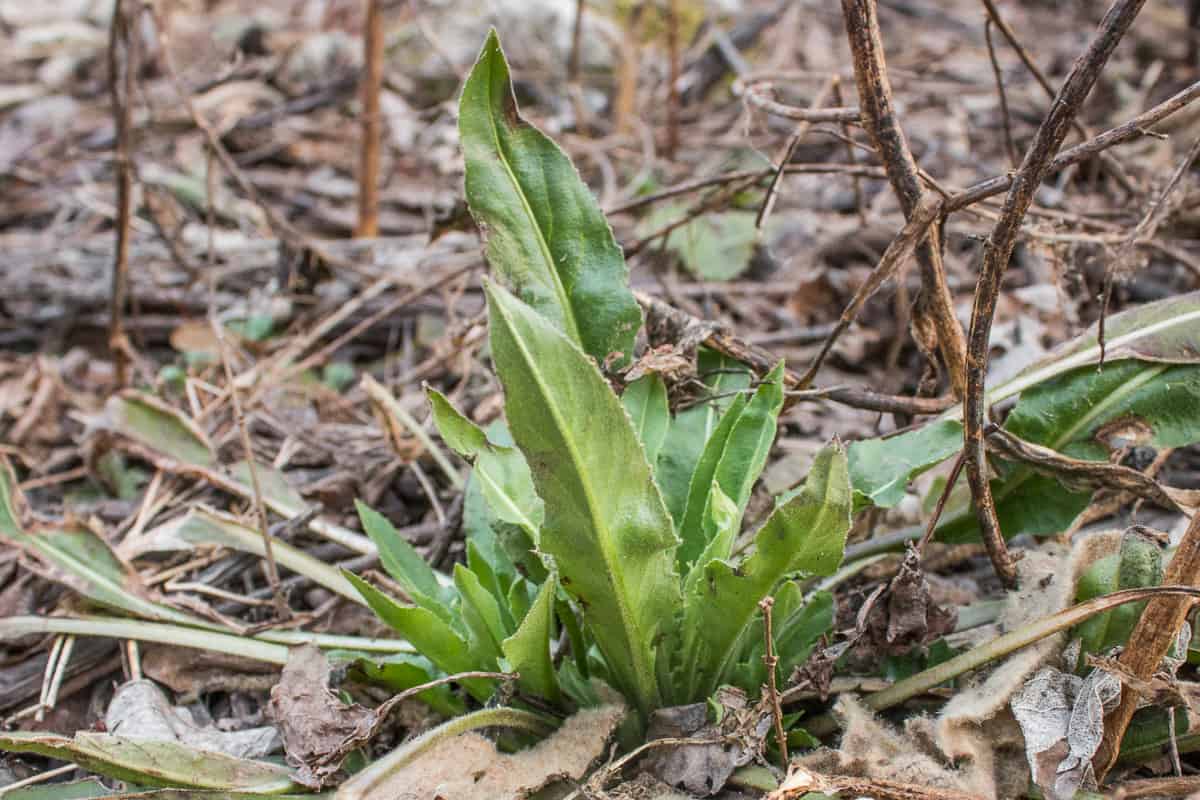
I also add an egg to help bind it, since I use a bit more greens than I've seen in other variations, but it'll set without it too. When it's all mixed together, you wrap everything up in a ball with cheesecloth, tying it to a spoon you can suspend over a pot so the ball is submerged in stock, and simmer it for a couple hours.
After the pudding's cooked, you cut into wedges and serve with some of the cooking liquid. It's a fun way to eat greens as a starch, especially if you want to use a couple strong tasting ones like dandelions or garlic mustard.
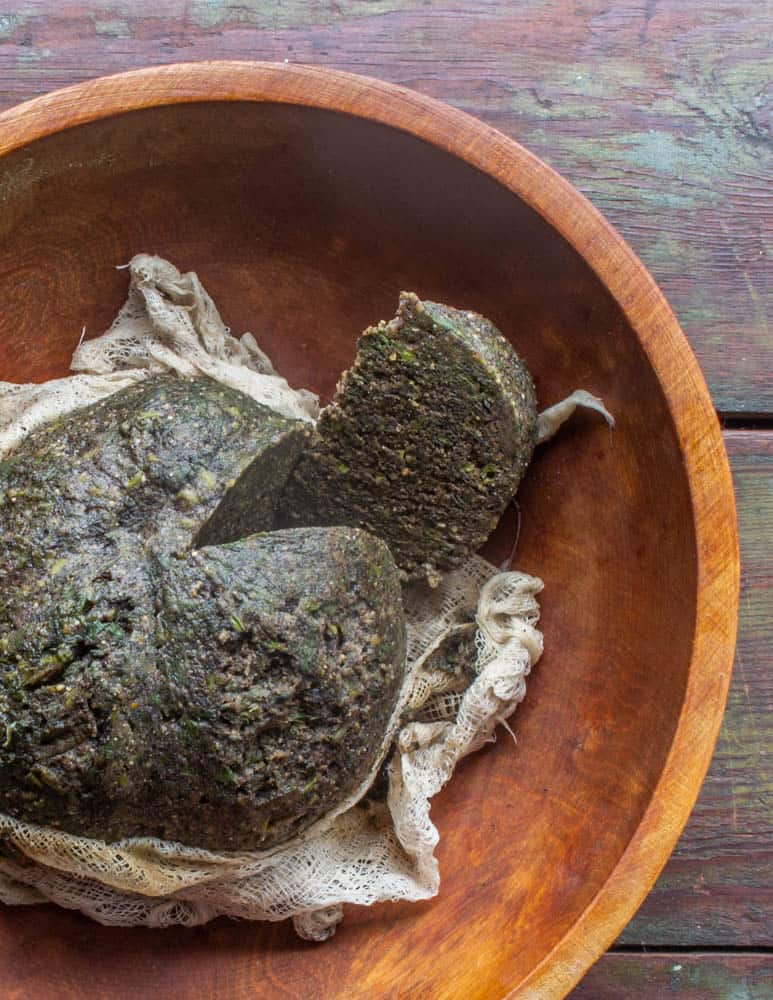
It makes for a good side dish, first course, or, with some sauteed mushrooms or extra wilted greens, a vegetarian main course, served with a ladle of the cooking broth. The texture's surprisingly meaty, and, formed into a log you could probably get away with call it plant sausage. In the images here I had it for lunch, with a handful of ham and some extra watercress, but just a thread of good olive oil and grated parm is good too.
A few spring greens I might use
- Dames rocket
- Dandelions
- Nettles
- Watercress
- Wild onion or ramp leaves
- Waterleaf
- Cow parsnip leaves (in small amounts-these should be blanched before chopping)
- Garlic mustard (in small amounts)
Flours
As you don't need gluten here, you can make versions using all kinds of different flours, just don't use white flour as it's not very interesting. Here's some that will work. Buckwheat will give it even more of a meaty texture.
- Buckwheat
- Wild rice
- Oat
- Barley
- Millet
- Acorn (up to ⅓ of the total weight of flour)
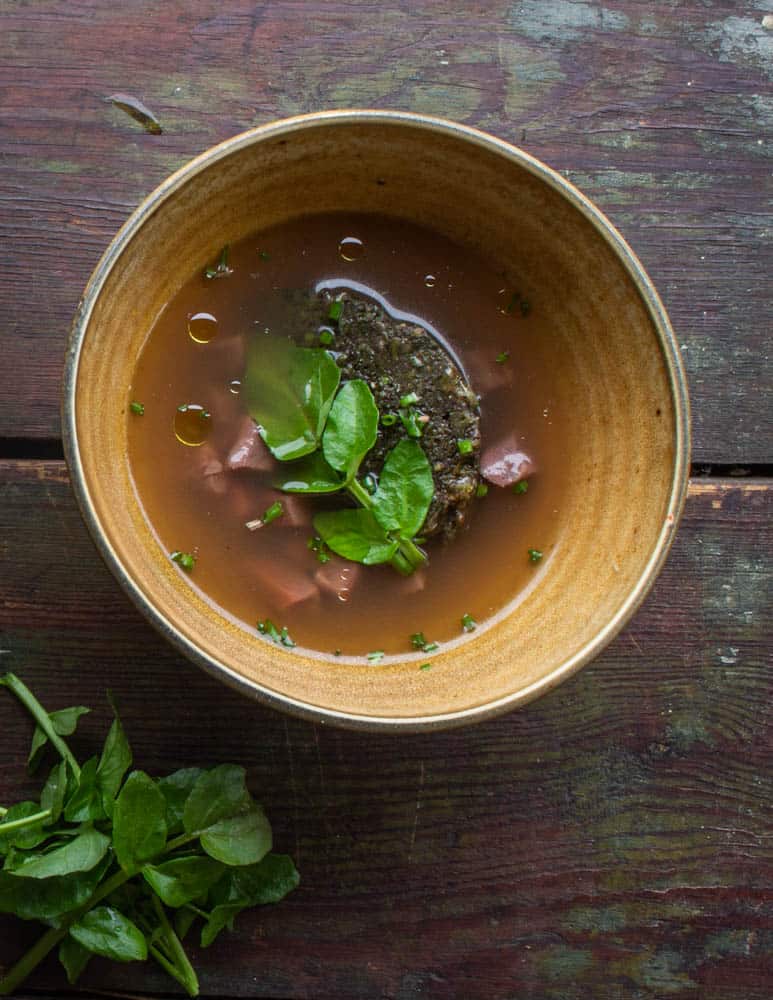
Stinging Nettle Pudding
Ingredients
- 6 ounces (170 g) assorted wild greens, finely chopped
- 2 ounces (55 g) wild onion leaves, ramp leaves, or green onions tops (optional)
- 1 teaspoon salt
- 1 cup 115 g low-gluten flour, such as barley, oat, wild rice, or buckwheat
- 1 large egg optional
- 1 teaspoon baking powder
- 1 tablespoon water
- 6 cups stock, such as chicken or mushroom the exact amount can vary a bit depending on the size of your pan
For Serving
- Good-tasting oil like such as EVOO, Smude’s sunflower, or a nut oil
- Freshly grated parmesan Parmesan cheese optional
- Fresh-cracked black pepper
Instructions
- Wash the greens and onion leaves, then dry well. Grasp all of the greens on a large cutting board, and shred them finely with a large knife, then mound the greens back together, rotate 90 degrees, and shred again. Finely chop all of the greens, then combine with the remaining ingredients and allow to rest for a few minutes to allow let the salt to draw moisture from the greens.
- In a medium saucepan, bring 6 cups or so of stock to a simmer. Form the dumpling into a ball as well as you can, then wrap it in cheesecloth to help it hold its shape. Use more cheesecloth than you think you’ll need, tying it around a wooden spoon or a similar utensil to suspend the dumpling in the cooking liquid.
- Simmer gently for up to 2 hours, or until tender, then remove the dumpling, unwrap it, slice it into wedges, and serve with the broth it cooked in, topping each bowl with a drizzle of good- tasting oil. Pass the Parmesan and pepper at the table.
- Variations
- Four cups of finely minced greens like such as parsley, spinach, and kale can be substituted for the wild greens and wild onion leaves. You can make your own blend of greens using whatever’s available to you.

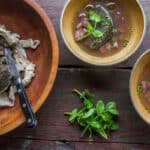
Scott K
Your comment about it almost being like a plant sausage got me thinking about adapting it to borrow from Italian chickpea polenta instead of using oatmeal or other grains. I think I may try it both ways. Another one I might try is gram flour.
Thanks!
Alan Bergo
All of those would work well.
Summer
I must tell u Mr Bergo that in the enormous world of food, that u r my favorite chef to follow. Thank u so much for what u r doing; I treasure ur book & am eagerly awaiting your next 😊
Alan Bergo
Thanks Summer. As far as the next book, it’s kinda complicated. Writing the last one was really expensive, so Im trying to figure out how I can afford to write the next one, as odd as that may sound. It’ll happen though.
Colleen
Perhaps you may want to look into Amazon KDP publishing? You put together your book and Amazon publishes and prints it for you! They get a high royalty rate but it's free to get your work out there. 🙂 Hope this helps.
Alan Bergo
I looked at it with a different business, it's a racket and there's a bunch of class-action lawsuits going. Self publishing is an option but it's a big learning curve.
Liz
Thank you for posting this beautiful ancestral recipe. Is something missing in the directions part of the recipe?
Alan Bergo
It seems pretty clear to me. Something in particular I can clarify?
Taija
I just will cook it today, was looking for such recipe. The greens here ( Switzerland) are growing enormously....thanks for posting this
Alan Bergo
Have fun Taija! It’s still pretty cold up here in WI. We probably have a week or two before I can really gather things in quantity.
Taija
Alan, since end of Februrary ramps, since one month more than 20 different wild herbs. Now the trees are coming to harvest. Made both versions of your recipe, The broth was delociouse, Took miso.